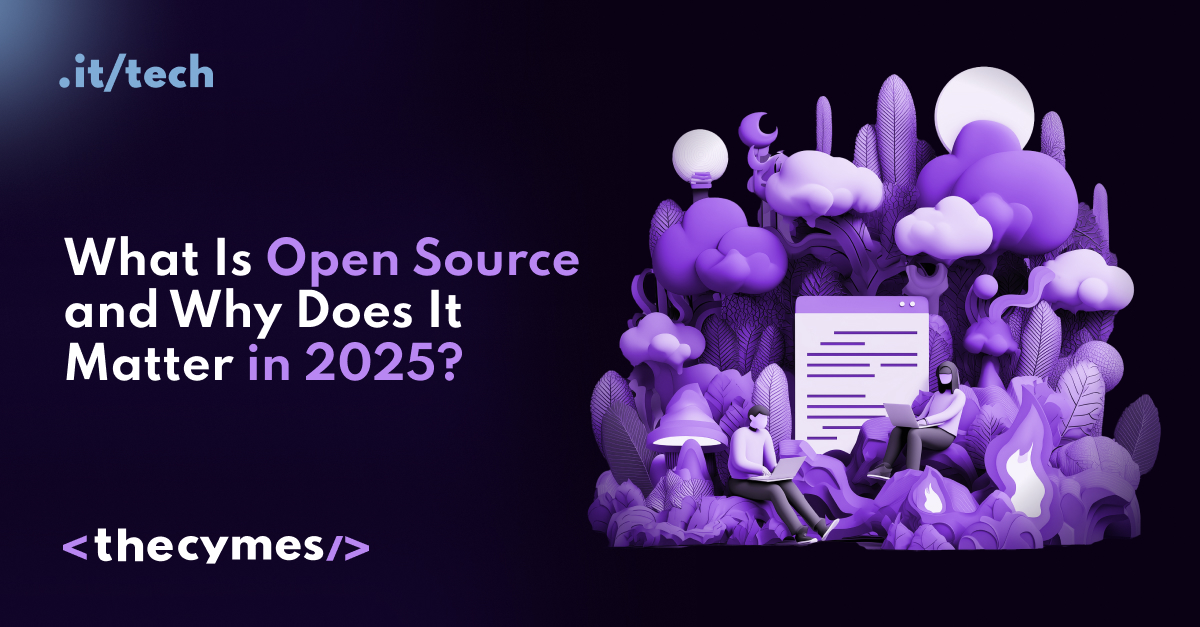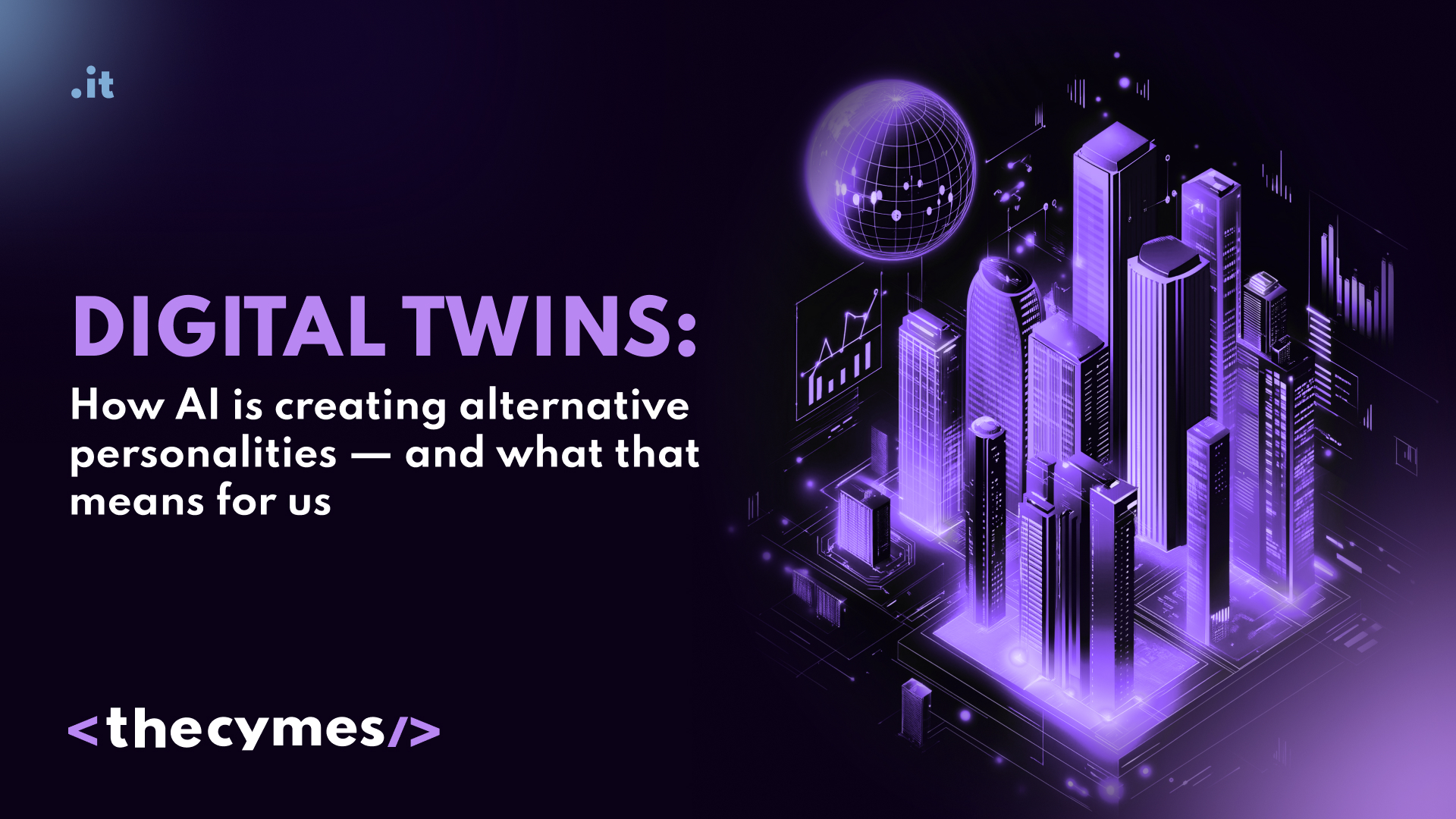Table of Content
What is open source software and why does it matter in 2025?
/>What's better to choose: open source software or proprietary software? Learn more in our latest article!What Is Open Source Software?
Open source has long since ceased to be an exclusive environment for enthusiasts and student hackathons. Today, open source is the foundation of the infrastructure that powers the largest cloud services, artificial intelligence systems, financial solutions, and even government platforms.
It is not just a convenient format - it is a strategic decision. Both for businesses and government agencies.
Open source often offers an unobvious advantage: freedom. The ability not to be tied to one vendor. Control the development of technology. Move faster than your competitors.
If you are a manager or a decision-maker in a company, you should understand how open source works and why it is valuable not only for engineers but also for the business as a whole.
Unlike proprietary (closed) software, open source does not require expensive licences or customisation restrictions. This gives product development teams the freedom to launch MVPs faster, test hypotheses, and change the architecture. In critical systems, it is also a matter of trust and security: you know exactly how the code works and who worked on it.
How Open Source Software Works
Open source is all about collaboration. Code is stored on public repositories such as GitHub or GitLab. It can be reviewed, commented on, and improved by engineers from all over the world. Each change is recorded, checked in, and then either accepted into the main branch or rejected with arguments. It's very similar to peer review in science, only faster and more practical.
In open source projects, there are maintainers - those who maintain the product, approve changes, and set the direction. This doesn't mean chaos - on the contrary, in many projects, the processes are better organised than in some corporate teams.
What's important: businesses can either use open source projects without changes or create their own forks (code branches) and adapt solutions to their internal needs. In the corporate sector, this provides tremendous flexibility: your engineers can quickly adapt systems to current tasks - from changing the API structure to integrating with an ML model or an internal database.
Benefits of Open Source Software for Business
For businesses, open source is not just about being free. It's about speed, control, and long-term savings.
-
Full transparency. You can see how the system works. You can evaluate the quality of the code, security, and understand the architecture - without guesswork and black boxes. This is critical for financial, medical, or governmental decisions.
-
Flexibility. No need to wait for the vendor to release an update. The team can independently change the functionality, optimise processes, or integrate a new module. This is especially valuable in a fast-paced environment, such as retail or logistics.
-
More secure architecture. Contrary to popular myth, open source solutions can be more secure than proprietary ones. A large number of participants check the code and fix vulnerabilities, often faster than vendors.
-
Long-term savings. Initial integration may require investment, but then there are minimal costs for licences, scaling, or adaptation to new conditions.
-
Community. You are not alone. Your team can get support, experience of other developers, and ready-made solutions from many countries around the world. This speeds up product development and reduces technical risks.
Challenges and Risks of Open Source Software
Open source gives freedom, but it also comes with responsibility. Businesses should understand not only the benefits but also the limitations of this approach.
-
Lack of official technical support. If something goes wrong, you won't be able to quickly call a call centre. The company either needs to have a strong internal technical team or cooperate with partners who can take care of it.
-
Choosing among thousands of projects. There are often several open source solutions for the same task. Not all of them are stable or actively supported. You need technical expertise to distinguish a live project from an outdated one.
-
Legal nuances. Licences like GPL, MIT, or Apache have their limitations. Some of them require you to open the code of your product if you modify it. This should be taken into account before launching the project.
-
Customisation costs. The software itself is free, but its integration, adaptation, and support require time and resources. It is not always cheaper than a closed off-the-shelf solution.
-
The human factor. Open source projects are sometimes created and managed by individual enthusiasts or small teams. If the project leader stops supporting it, there will be no updates. And the business will have to look for an alternative or take over support.
Popular Examples of Open Source Software

Image from Michalsons
Open source has long ceased to be "pure enthusiasm" - today it is a fundamental tool used by global corporations, government agencies, educational institutions, and independent developers. Many of them are industry standards.
Linux - The operating system that runs the Internet
What it is: A free and open-source Unix-like operating system. It has dozens of distributions, from Ubuntu and Fedora to Red Hat and Arch Linux.
Who uses it:
- Google (Gmail and Android servers are also based on Linux)
- Amazon Web Services
- NASA
- CERN
- Banking sector (due to security and stability)
What it replaces: Windows Server, macOS Server
Advantages: control, free licence, stability, secure architecture
Disadvantages: requires more technical knowledge for administration
WordPress - The engine of 40% of websites in the world
What it is: An open source CMS for creating websites of any type - blogs, online stores, corporate portals.
Who uses it:
- TechCrunch
- Bloomberg Professional
- BBC America
- The Walt Disney Company (several projects)
What it replaces: Wix, Squarespace, Webflow
Advantages: hundreds of thousands of plugins, themes, and extensions. You can customise everything from SEO to email newsletters
Disadvantages: requires maintenance (but it makes the site more flexible)
Mozilla Firefox - The browser that doesn't follow you
What it is: A free and open-source browser developed by the Mozilla Foundation.
Who uses it:
- Journalists, governments, and private companies - for privacy reasons
- Available on Linux, Windows, macOS
What it replaces: Google Chrome, Safari, Microsoft Edge
Advantages: minimal tracking, extensions without data collection
Fact: Firefox was the first to introduce private mode and tracker blocking
Blender - Free 3D studio for everyone
What it is: An open source platform for 3D modelling, animation, rendering, VFX and even video editing.
Who uses it:
- Netflix (in animation production)
- Ubisoft.
- NASA for 3D visualisation
What it replaces: Autodesk Maya, 3ds Max, Cinema 4D
Advantages: zero price, regular updates, training resources
Fact: Blender is funded by Epic Games, NVIDIA, AMD, Unity
LibreOffice - A subscription-free alternative to Office
What it is: An open source office suite: Writer (texts), Calc (spreadsheets), Impress (presentations), etc.
Who uses it:
- Universities, schools, government agencies
- NGOs that cannot afford paid packages
What it replaces: Microsoft Office, Google Docs
Advantages: full offline work, support for all formats
Disadvantages: slightly less user-friendly interface, fewer integrations
PostgreSQL / MySQL - Reliability in data storage
What it is: The most popular open-source databases in the world.
PostgreSQL: Strong in complex queries, transactional processing
MySQL: Simple, stable, ideal for websites
Who uses it:
- Instagram (PostgreSQL)
- Facebook (MySQL)
- TripAdvisor
- Spotify
What it replaces: Oracle DB, Microsoft SQL Server
Advantages: free licence, scalability, large community
Disadvantages: less developed support for complex business processes (in MySQL)
TensorFlow - Open source for machine learning
What it is: A framework for building ML/AI models, supported by Google.
Who uses it:
- Google Search, Google Translate
- Airbus (flight analysis)
- PayPal (anti-fraud)
- Airbnb (recommendations)
What it replaces: IBM Watson Studio, Azure Machine Learning, Amazon SageMaker
Advantages: free licence, scalability, Python support, active ecosystem
Fact: TensorFlow is the basis of many Google AI services

Open source is not just an alternative to commercial products. It has been one of the main drivers of technological progress over the past 20 years. The reasons are practical.
-
Open source accelerates development. Thousands of developers around the world see the code, test it, and suggest improvements. This creates the effect of a shared brain: problems are found faster, solutions appear earlier.
-
Research institutes and businesses work together. Many breakthrough technologies (e.g. TensorFlow, PyTorch, Kubernetes) have emerged as open source projects. The academic community publishes ideas, and engineers build tools that can be immediately applied in practice.
-
Rapid prototyping. For start-ups or R&D departments, the use of open source allows them to launch an MVP in weeks, not months. The platform is already available - you just need to adapt it to your task.
-
Open standards instead of vendor lock-in. If a solution is built on an open stack, it is easier to scale, integrate, or migrate. This gives businesses flexibility and independence.
-
Community as a value. When you work with open source software, you are not alone. There are forums, documentation, and enthusiasts. This does not always replace support, but it definitely speeds up learning and solving common issues.
Open Source vs. Proprietary Software
For business, the key question is not just ‘what is it?’ but ‘what to choose?’. Open source and proprietary software have their strengths and weaknesses. And it all depends on the task.
Access to the code vs. closed source. In the case of open source, you can see how the system works and what is happening in it. Proprietary solutions are a ‘black box’ where you trust the supplier.
Flexibility. Open source software can be modified, added functions, and adapted to your specifics. Proprietary software is often limited by the licence and does not allow you to change the internal logic.
Support. Commercial software usually has a 24/7 support service. In open source, there is a community, gits, and Stack Overflow. This is also support, but it works a little differently.
Security. Some companies are afraid of open source - they say someone can hack it. In fact, transparency often means more eyes on problems and faster fixes. But it's important how actively the project is supported.
Cost. Open source is conditionally free. But if you need customisation, integration, or technical support, you'll still need resources. Proprietary software includes this in the contract.
Does ‘free’ mean ‘unsupported’?
Many people still associate the word ‘open source’ with a lone enthusiast writing something at home - and if a problem arises, there is nowhere to turn for help. This is one of the biggest myths. In reality, open source products are often not driven by a single person, but by entire communities, companies, and even commercial services.
Many popular open source solutions are supported by companies that specialise in commercial support. For example, Red Hat is building a business on this: they don't sell Linux because it's open source, but they sell its support, certification, updates, and infrastructure. The user always has a choice: either to figure it out on their own, or to pay and have guarantees - just like with any tool.
And then there is the community. Famous projects live an active life on GitHub, forums, Discord, and Reddit. Sometimes the community will answer your question faster than the support of a large paid product. And certainly in more detail.
Why tech giants are investing in open source
Google, Meta, Microsoft are not just users of open source. They are its active participants. TensorFlow, Kubernetes, PyTorch, VS Code - all these products are open source, and they have become the basis for many services that we use every day.
The reason is simple: it's profitable. Open source means faster development speeds, better quality due to feedback, and flexibility that is difficult to get in closed ecosystems. It's also a matter of reputation. When a company opens up a piece of code, it demonstrates its confidence, openness, and technological maturity.
By investing in open source, companies don't just give something away for free. They build ecosystems. They attract talent. They strengthen their products.
Where open source is heading in 2025
Open source has long ceased to be an ‘alternative’. In the field of artificial intelligence, it has become the foundation. The most powerful frameworks, from Hugging Face to Llama, are open source. The same is true for blockchain, government platforms, and educational systems.
A new concept is emerging - digital sovereignty. This is when a state or company controls not only the data but also the code that runs everything. And open source is the only real way here.
We are now seeing schools switching to Linux. Universities are creating their own educational platforms. How governments are building infrastructure on open source so as not to depend on monopolies. And this is just the beginning.
Why open source will remain for a long time
Open source is not a fashion. It is a response to the demands of the times: the need for transparency, control, and freedom.
For business, it means flexibility and independence. For developers, it means rapid growth and an open environment. For society, it is a tool for development, education and security.
Open source is here to stay because it works. It is simple. Effective. Open.




